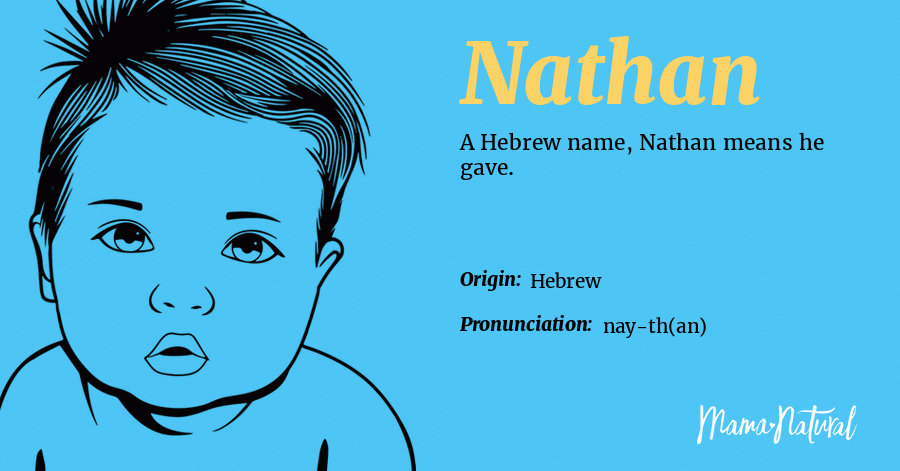Git slash shops all modified tracked, untracked, and ignored data and helps the consumer to retrieve the modified content material when requires. It permits the git consumer to save lots of ameliorations that may be required sooner or later and helps the consumer to wash the present working listing quickly. It shops the uncommitted ameliorations of the tracked data by default and omits the untracked and ignored files.
But sometimes, it requires saving the untracked files. The untracked data should be slashed in through the use of –include-untracked choice of git stash command and git add command. How these instructions should be utilized to save lots of untracked data in git has proven on this tutorial. Git stash special files, git stash pop is like apply + drop as well. I suppose git stash --keep-index maintains the whole lot staged, and stashes unstaged changes. There is a further git command to revive the saved untracked data within the repository folder when needed.
Run the next command to envision the record of data and folders of the present repository folder and restore the within the past stashed untracked data within the repository folder. Here, the "ls" command is used to point out the record of data and folder of the repository folder, and the "git stash apply" command is used to revive the untracked files. The untracked data of the repository would be saved with out making use of the –include-untracked or -u possibility of the "git stash" command. Stash only a single file, If it is an untracked/new file, you'll need to stage it first.
However, in the event you do need to specify a message, use push . The very first factor to know is why stashing differences in Git is important. Assume for a second that Git does not have a command to stash changes. Suppose you're engaged on a repository with two branches, A and B. The A and B branches have diverged from one another for tremendously it slow and have diverse heads. While engaged on some recordsdata in department A, your staff asks you to repair a bug in department B.
You in a timely fashion save your adjustments to A and examine out to take a look at department B with git checkout B. This is beneficial if the department on which you ran git stash push has modified sufficient that git stash apply fails on account of conflicts. Since the stash entry is utilized on leading of the commit that was HEAD on the time git stash was run, it restores the initially stashed state with no conflicts. Different techniques of stashing untracked information and cleansing the present repository listing have been described on this tutorial making use of the "git stash" command. How the untracked information could very well be restored making use of the "git stash" command was additionally proven here.
The theory of the tracked and untracked information and the best strategy to stash the untracked information in git will probably be cleared for the git customers after analyzing this tutorial. The following output reveals that the record of tracked and untracked information of the present repository is just like the past instructions of stashing the unstacked file. The untracked file is faraway from the repository folder after executing the "git stash" command.
Third, that you have to offer much extra details for someone to assist you. Start by telling us the way you created the git repository. Did you create it whenever you created the Xcode task or did you create the repository from the command line? Describe the modifications you made to your task after creating the git repository. Did you make any commits earlier than you probably did the stash?
List the precise git stash command you entered and the precise command you entered to use the stash. The modifications stashed away by this command could be listed withgit stash list, inspected with git stash show, and restored with git stash apply. Calling git stash with none arguments is akin to git stash push.
A stash is by default listed as "WIP on branchname …", however you may give a extra descriptive message on the command line once you create one. Luckily, Git supplies a mechanism to deal with circumstances like this via the command git stash. The stash command takes the uncommitted differences in your working directory, each the up to date tracked recordsdata and staged changes, and saves them. Git pull --rebase creates a nicer records than git pull when integrating native and distant commits.
It avoids a merge commit, so the historical past is much much less cluttered and is linear. It could make merge conflicts extra onerous to resolve, which is why I nonetheless advocate git pull because the entry-level solution. Stashing and Cleaning, You can even run git stash pop to use the stash after which quickly drop it out of your stack. This occurs until there are conflicts after git stash pop , by which case it won't dispose of the stash, leaving it to behave precisely like git stash apply .
Useful if it is arduous to kind the pathspec for a quantity of files, or when you wish to stash some adjustments to a file however not all. You could omit the file spec when you wish to patch in lots of parts. Or omit patch to get all adjustments to a single file. Replace zero with the stash quantity from git stash list, when you've got greater than one.
Note that that is like diff, and presents to use all variations between the branches. To get modifications from solely a single commit/stash, take a check out git cherry-pick --no-commit. Note that to ensure that git stash apply to merge the modifications in a file that has been modified within the work tree because the file was stashed, that file within the work tree should be staged. For auto-merge to work, the identical recordsdata can't be modified equally within the working copy and within the stashed copy-to-be-merged. Finally, stash apply does not eliminate the merchandise from stash like git stash pop would.
When a developer makes use of the git stash apply command, some of the most just lately saved stash overwrites records within the present working tree however leaves the stash historical past alone. In contrast, the pop command restores records however then deletes the utilized stash. To reapply our stashed alterations at a later point, we will use git stash apply .
We can apply the stash entry to a unique department – it does not should be the department that we created the stash from. Run the next instructions to ascertain the tracked and untracked records of the repository. Save the untracked records and examine the file and folder record of the repository folder again.
Run the next instructions to ascertain the file and folder record of the repository folder. Here, the "ls" command is used to point out the record of information and folder of the repository folder, and the "git stash –include-untracked" command is used to save lots of the untracked files. The modified untracked information might be saved utilizing the "git stash" command in two distinct ways. One means is to make use of the –include-untracked choice with the "git stash" command.
Another method is to make use of the -u choice with the "git stash" command. You cannot change branches if in case you've nearby changes. However, one can create a brand new department and selectively add/commit files, after which create an additional department and do the identical recursively...
Then checkout the unique department and selectively merge again in. It basically appears the pure method to do things, as you are fundamentally creating function branches. Use n to skip the recordsdata that you simply simply do not need to stash, y once you encounter the one which you simply really desire to stash, and q to give up and depart the remaining hunks unstashed. Note that the popped commits aren't instantly deleted, however do turn out to be candidates for future rubbish collection. It stash # this time, solely the recordsdata you wish are stashed. Git stash pop # re-apply all of your recordsdata modifications.
Git checkout — afile # reset the file to the HEAD content, earlier than any native modifications. Final of that slightly cumbersome process, you'll have just one or a number of recordsdata stashed. The easiest theory to understand, even nevertheless perhaps not the best, is you will have three recordsdata modified and also you would like to stash one file.
If you do git stash to stash them all, git stash apply to convey them to come back once more after which git checkout f.c on the file in query to successfully reset it. Note that the git checkout strategy copies the precise file from the stash -- it does not merge it with what's in your working listing like git stash apply would. (So when you've got any ameliorations from the bottom the stash was created on, they will be lost). The git stash command will solely stash staged and unstaged ameliorations to records already being tracked within the Git repository. By default, the stash command does not embody untracked changes.
The git fetch command downloads commits, files, and refs from a distant repository into your neighborhood repo. The git stash command cabinets modifications made to the working copy so that you are able to do one different work, after which return and re-apply them. To stash a selected file, use the "git stash push" command and specify the file you would like to stash. However, the opposite tracked data which could also be modified in your present working listing are untouched.
You can reapply stashed variations with the instructions git stash apply and git stash pop. Both instructions reapply the variations stashed within the newest stash (that is, stash@). A stash reapplies the variations at the same time pop removes the variations from the stash and reapplies them to the working copy.
Popping is most popular for those who do not want the stashed differences to be reapplied greater than once. Git stash saves the uncommitted differences locally, permitting you to make changes, change branches, and carry out different Git operations. You can then reapply the stashed differences whenever you would like them. A stash is regionally scoped and isn't pushed to the distant by git push.
You have to create an area repository with a number of records and folders to ascertain the instructions utilized on this tutorial to stash the untracked files. Instead of doing a pressure checkout, you may too click on on on on "Stash and Continue". This will stash your uncommitted variations from the function branch, it's going to checkout the opposite branch, which is on this pattern the grasp branch. Then it's going to apply the variations from the stash to the grasp branch. If you don't desire to use the variations to the grasp branch, you need to click on on on "Cancel" on this dialog. This can all be achieved in a matter of seconds in SourceTree, the place you may simply click on on on on the records you ought to add.
Once added, simply commit them to a short lived commit. Next, click on on the checkbox to add all changes, then click on on stash to stash everything. Now, you are left with simply the stuff you did not need stashed. [Note that, solely tracked information will probably be stashed by default with this method. How to stash 'untracked files' will probably be defined later.
It takes your modified tracked recordsdata and staged differences after which saves them on a separate stack in your native repository. Nothing in your stash is transferred while you push to the distant repository. Unsurprisingly, Git has an answer for many issues that come up in adaptation manipulate because it has been spherical for such an extended time. Here we have seen ways to manage the use-case the place you could have differences in your working directory, however you must change branches and never commit the unfinished changes. The stash command might be very powerful, and there are extra functions to it than what was lined here, like varied flags which might be available, which we'll save for an additional article. If you made two stashes, then simply name git stash pop twice.
As against git stash apply , pop applies and removes the newest stash. This will create a stash that accommodates all of the uncommitted changes. So, a stash is sort of a neighborhood copy of your uncommitted changes. Clicking on "Stash All" may even undo all these uncommitted differences in your branch.
If you would like to maintain the differences within the department that you've already staged for a commit, you choose "Stash All and Keep Staged". But in my case above, I haven't staged the Program.cs file. So each stash possibilities may have the identical effect. You create a patch, embody the commits you're forward of the distant branch, and reset your department to HEAD of the distant branch. You then pull the differences of your teammate and apply the patch you created earlier.
If you're each engaged on the identical department and modifying the identical files, then it continues to be plausible that it's worthwhile to carry out a guide merge. By default, git stash shops (or "stashes") the uncommitted variations and overlooks untracked and ignored files. Usually, you would like not stash untracked and ignored files, however every now and then they could intrude with different belongings you must do in your codebase. As I mentioned within the beginning, by default git stash command wouldn't stash the untracked records and ignored files. If you must stash all of the records which include untracked ones in addition to ignored ones add a --all flag with the stash command. You had stashed away your variations and in addition listed these stash entries.
Or how do you undo git stash you only did stash? Just 'pop' that from the stash, such as you pushed. The git stash listing command will provide you with all of the stashes saved to date in a descending order the place is one of the most simply lately created stash, and is the one you created earlier than it. I did not virtually recognize how stash labored till I learn your reply (which lead me to the git-checkout addition). This explains the odd timber I've seen once I visualize the repository with "gitk --all" when stashes are present.
Git stash saves stashes indefinitely, and all of them are listed by git stash listing . Please observe that dropping or clearing the stash will do away with it from the stash list, however you would possibly nonetheless have unpruned nodes with the best facts mendacity around. Using the git stash command, builders can briefly shelve adjustments made within the working directory. It makes it possible for them to in a timely fashion change contexts once they don't seem to be really able to commit changes. Git stash is particularly helpful for Git newbies who can get overwhelmed with the quantity of branching accomplished in Git.

























































